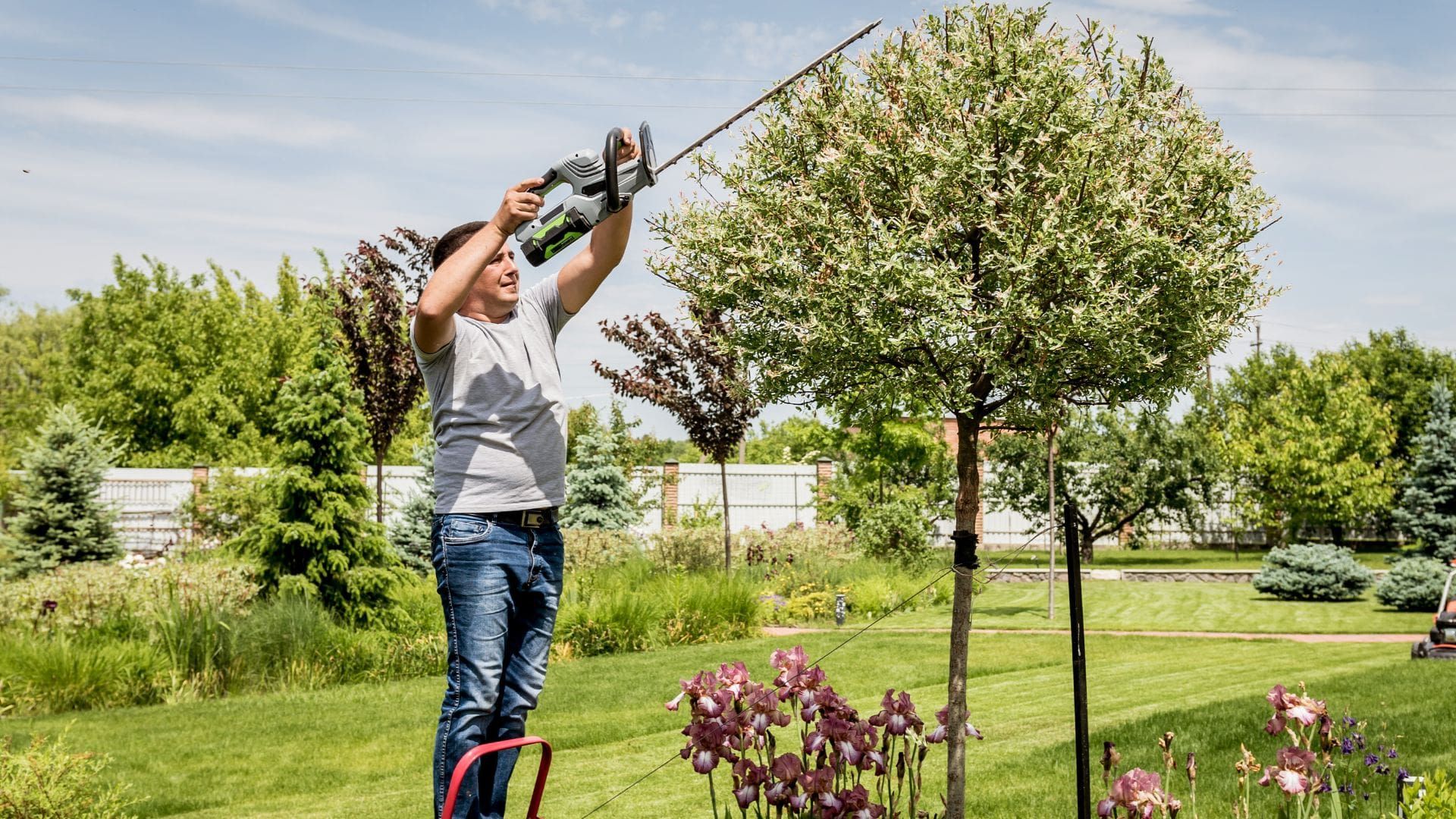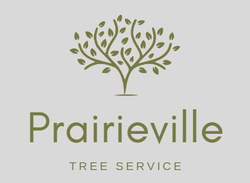Essential Tools and Techniques for Effective Tree Trimming

When it comes to effective tree trimming, having the right tools and techniques can make all the difference. From precise pruning shears to mastering proper pruning methods, the key lies in a combination of skill and equipment. But what about the lesser-known safety measures or understanding the intricate growth patterns of trees? These elements are just as vital but often overlooked. Stay tuned to uncover the hidden gems of tree trimming that can elevate your pruning game to the next level.
Key Takeaways
- Quality pruning shears and saw for precise cuts in tight spaces.
- Use a sturdy ladder for safe access to higher branches.
- Employ proper pruning techniques like crown thinning and deadwooding.
- Wear safety gear like hard hat, goggles, and ear protection.
- Understand tree growth patterns for effective trimming decisions.
Essential Tree Trimming Tools
When trimming trees, we rely on a selection of essential tools that enable us to efficiently and effectively shape and maintain their growth. In Prairieville, LA, where tree trimming is a common practice due to the lush environment, having the right tools is critical. One of the most important tools for tree trimming is a quality pruning shear. These shears allow us to make precise cuts on branches of varying thickness, promoting healthy growth and maintaining the tree’s overall shape.
Another indispensable tool is the pruning saw. Unlike regular saws, pruning saws have a curved blade that makes it easier to reach tight spaces and cut through thicker branches. This tool is essential for larger branches that pruning shears can’t handle.
Additionally, a sturdy ladder is essential for reaching higher branches safely. It provides stability and ensures that we can access all parts of the tree without risking injury.
Proper Pruning Techniques
To properly prune trees, we utilize a range of techniques that guarantee the health and growth of the tree while maintaining its structural integrity. When it comes to proper pruning techniques, there are key strategies to keep in mind:
- Crown Thinning: This method involves selectively removing branches throughout the tree’s canopy to increase light penetration and air circulation, promoting overall tree health.
- Deadwooding: Removing dead, diseased, or damaged branches not only improves the tree’s appearance but also prevents potential hazards such as falling limbs.
- Crown Raising: By removing lower branches, you can create clearance underneath the tree for pedestrians, vehicles, or structures, enhancing both safety and aesthetics.
Safety Equipment for Tree Trimming
As we focus on safety during tree trimming, ensuring the proper use of safety equipment is essential to prevent accidents and injuries. When engaging in tree trimming activities, it’s important to have the appropriate safety gear to protect oneself from potential hazards. The most important safety equipment includes a hard hat to shield your head from falling branches or debris, safety goggles to safeguard your eyes from wood chips and dust, and sturdy work gloves to provide grip and protect your hands from cuts and splinters.
Additionally, wearing ear protection can prevent damage from prolonged exposure to loud chainsaw noises. A well-fitted harness and reliable climbing ropes are crucial for tree climbers to prevent falls and ensure stability when working at heights. It’s also important to have a first aid kit readily available in case of accidents. By utilizing the proper safety equipment, we can minimize risks and create a safer environment for effective tree trimming operations.
Understanding Tree Growth Patterns
Understanding tree growth patterns involves observing the annual rings within the trunk to gauge the tree’s age and environmental conditions it has experienced. This knowledge is important for effective tree trimming as it helps in understanding how the tree has developed and how best to care for it.
When looking at tree growth patterns, consider the following:
- Ring Thickness: The thickness of each ring can indicate the rate of growth during that particular year, with wider rings suggesting favorable growing conditions and narrower rings indicating harsher conditions.
- Ring Color: Variations in ring color can reveal the presence of diseases, pests, or other stressors that the tree has faced over the years.
- Ring Spacing: The spacing between rings can provide insight into the tree’s growth spurts and periods of dormancy, allowing for a better understanding of its overall health and vitality.
Best Practices for Branch Removal
When evaluating branch removal, we prioritize safety, tree health, and overall aesthetics to guarantee the best outcome for the tree.
Safety is paramount. Before any cuts are made, we assess the weight distribution of the branch, potential hazards below, and the best angle for a safe removal. It’s essential to plan the cut to avoid any sudden movements that could harm people or property.
Ensuring tree health is also important. We carefully examine each branch to be removed, checking for signs of disease, pest infestation, or decay that could spread to other parts of the tree if not properly addressed. By removing these compromised branches, we promote the tree’s overall well-being and longevity.
Finally, we consider the aesthetic impact of branch removal. Strategically pruning branches to enhance the tree’s natural shape and symmetry not only improves its appearance but also maintains its structural integrity.
Following these best practices for branch removal results in healthier, safer, and more visually pleasing trees.
Frequently Asked Questions
Can Tree Trimming Help Improve the Overall Health of My Trees?
Yes, tree trimming can greatly enhance the overall health of our trees. Regular trimming promotes proper growth, removes diseased or dead branches, and improves sunlight exposure. It also enhances airflow, reducing the risk of pests and diseases.
What Time of Year Is Best for Tree Trimming?
In our experience, timing is essential for tree trimming. We find that the best time is during the dormant season. It’s like giving them a well-deserved haircut in the winter, promoting healthier growth come spring.
Are There Any Specific Regulations or Permits Required for Tree Trimming?
Yes, specific regulations and permits may be required for tree trimming. It’s important to research local ordinances and consult with authorities. Non-compliance can result in fines or legal consequences. Prioritize safety and legality.
How Often Should Tree Inspections Be Conducted for Maintenance?
Annually, we assess trees for maintenance. Regular inspections aid in identifying issues early, promoting healthy growth and safety. It is crucial to remain proactive in caring for trees, averting potential hazards.
Is It Necessary to Hire a Professional for Tree Trimming, or Can It Be Done Diy?
We recommend hiring a professional for tree trimming. It guarantees safety, proper techniques, and tree health. Though DIY is possible for small tasks, professionals have the expertise and tools for effective, long-term tree care.
Conclusion
In summary, using quality tools like pruning shears and a pruning saw, along with proper techniques such as crown thinning and deadwooding, is vital for effective tree trimming.
Safety equipment like a sturdy ladder and hard hat are essential for protecting yourself during the process.
By understanding tree growth patterns and following best practices for branch removal, you can guarantee the health and longevity of your trees.
Are you ready to take your tree trimming skills to the next level?
Leave a Comment
Your email address will not be published. Required fields are marked *
